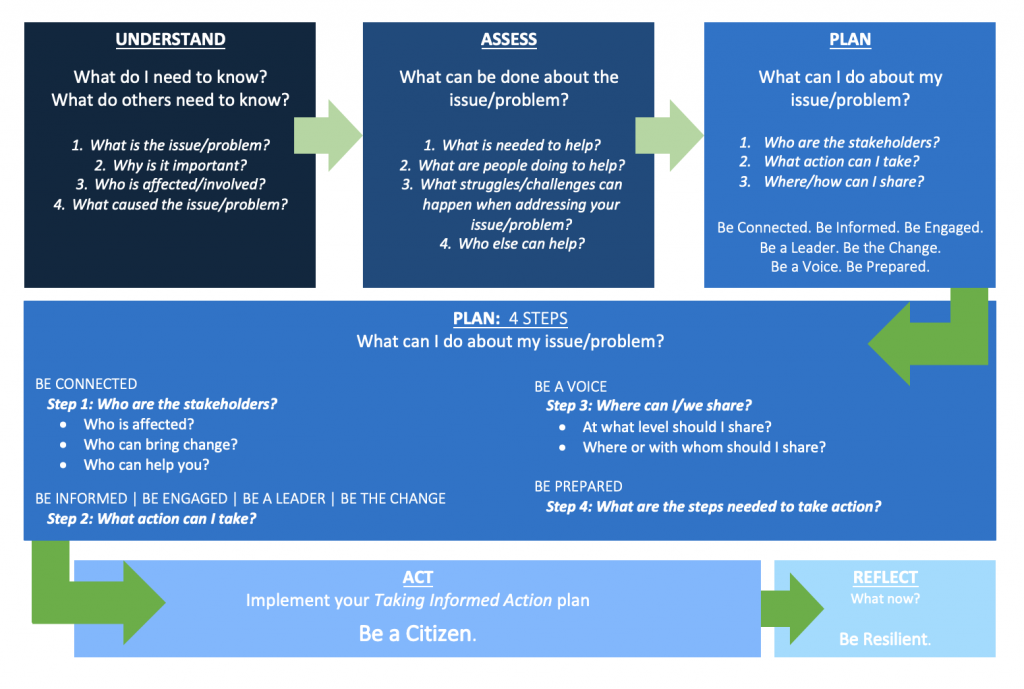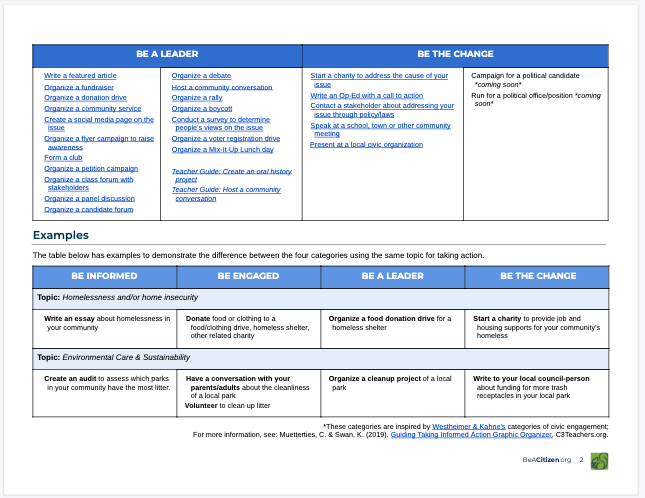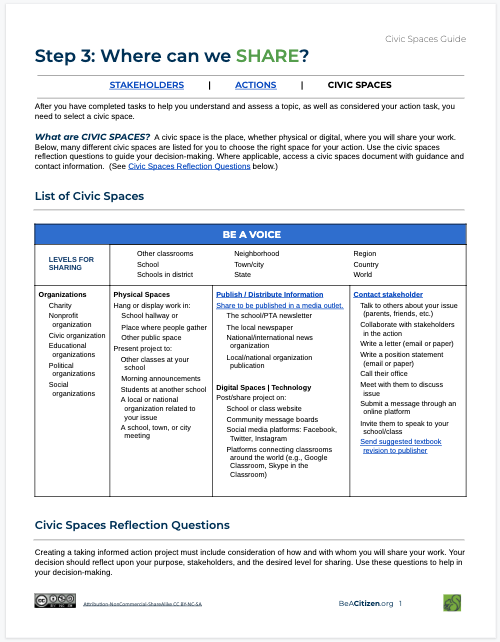It's time to take action.
Be a Citizen: Civic Action Project Guide
Building on the taking informed action component of the Inquiry Design Model blueprint, this guide helps teachers and students walk through the questions they should ask in order to UNDERSTAND, ASSESS, PLAN, and ACT on issues or concerns affecting society.

Be a citizen: Civic action project guide
Understand, assess, Plan, ACT, & Reflect
Based on the C3 Framework and Inquiry Design Model’s “Taking Informed Action” (TIA) structure, this series of questions and tasks helps students and teachers determine important information needed to create and implement a civic project, whether small or large in scope. Both teachers and students can use the TIA materials to create a civic project.
The Be a Citizen: Civic Action Project Guide has guiding questions to help you UNDERSTAND, ASSESS, PLAN, take ACTION, and REFLECT
The PLAN documents (below) provide step-by-step guidance for selecting and contacting STAKEHOLDERS, selecting and planning the ACTION task, and selecting the right CIVIC SPACE to share.
**These documents are also embedded within the Project Guide.
Why is everything on Google Docs? To make teacher/student use and revisions much easier! Teachers are encouraged to amend this document according to their students’ needs and resources. Example: revise the directions; create custom “Understand” questions; etc.
Let us know if we’re missing something! These are considered “living documents.” The needs for civic engagement are always evolving and, so too, should these guides.
PLAN Documents
Screenshots of main PLAN documents.




Each PLAN document includes hyperlinks to Student Guides for that topic.
Stakeholders
After students have completed tasks to help them understand and assess a topic, they should reflect upon the different stakeholders involved:
- Who is affected?
- Who can bring change?
- Who can help you take action?
The Stakeholder Guides explain the different ways people can be stakeholders and how to contact them, from everyday citizens to elected officials.
ACTIONS
Actions are a civic project or task to apply learning to a real world issue. Our collection includes over 50 different action task guides, organized by four categories:
- To be informed, students learn about an issue and communicate learning.
- To be engaged, students engage with others on an issue.
- To be a leader, students organize a collaborative action
- To be the change, students seek transformation, meaning they address the root cause of their issue.
CIVIC SPACES
A civic space is the place, whether physical or digital, where action tasks are shared with others. The Civic Spaces Guide includes a list of different levels for sharing, as well as guidance for selecting the right space.
